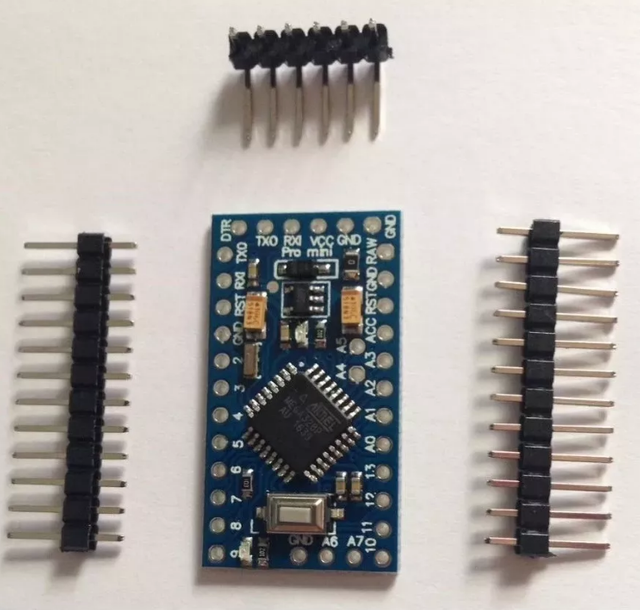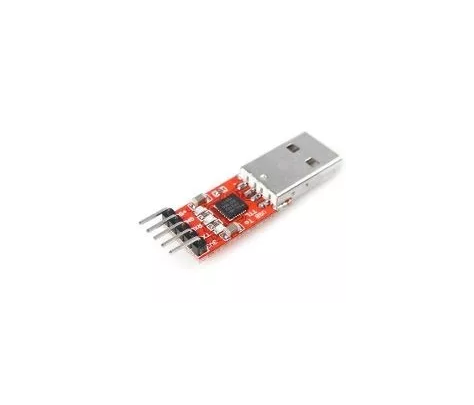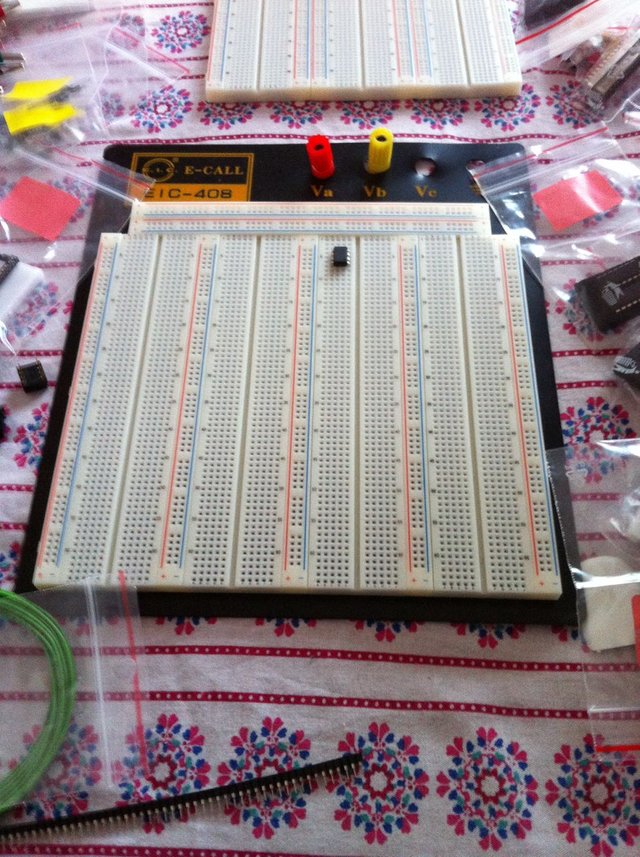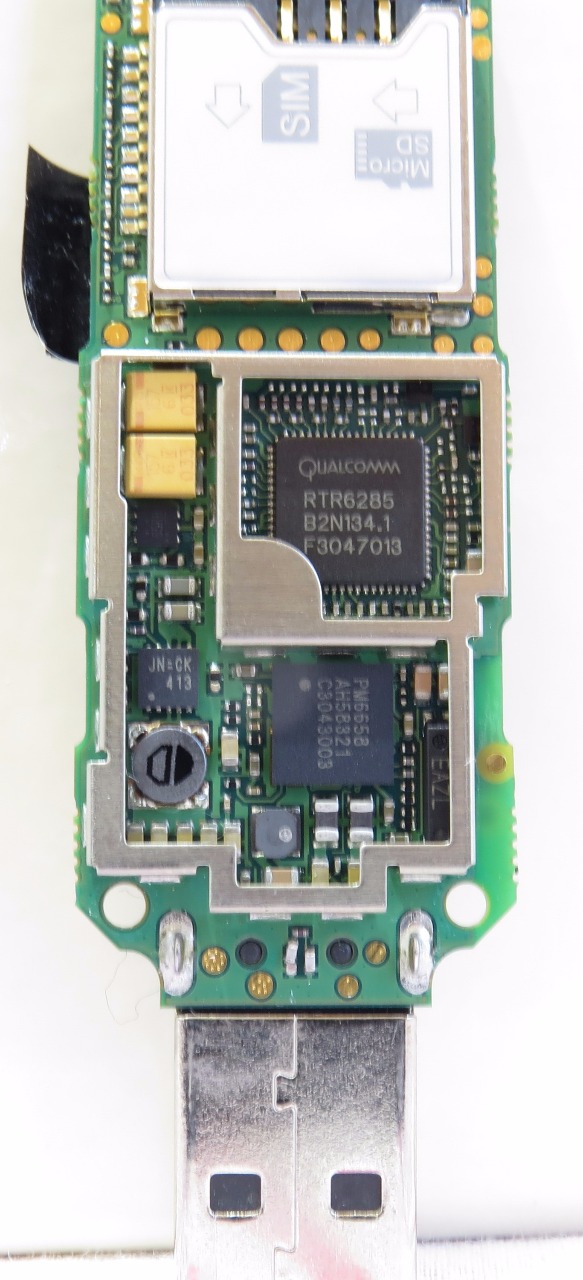Our goal is to have a hardware wallet for IOTA
Therefore, we need to build the hardware, of course. Here is our starting points. We got a protoboard and a few materials to start with. We bought an arduino mini and a USB conversor.

The main idea is to have a full hardware IOTA wallet where you may store a main seed encrypted and offline and where you may have the majority of your wealth in IOTA. Furthermore, we know IOTA is meant for Devices. We will use a SIM reader/writer attached to the USB wallet to allow for the register of SIM cards and hence empower the user with the ability to have a control center in the wallet software. If you're following our posts, this software will run as a Chrome App, pretty much following the model of the major Hardware Wallets in the market, i. e. Ledger, Trezor, Keep Key and so on. This brings protection, sandboxing, 2-factor authentication out-of-the-box and interoperability as it works cross Operational Systems and will only open with your authentication.
So, here are a few snaps from what we began working today.
Arduino Mini
We've chosen the Arduino Mini because it is powerful, easy to work with, easy to program and cheap for production. Here's what we bought for our project.

The USB Conversor
The Arduino Mini uses this conversor to be able to access the boatloader and implant the programming. Also it will be great to have it for production since it will keep on reading and writing the way we need it to.

Protoboard
This is, of course, the arena where we may work and produce the desired product. Also, we have a few chips we may use on production later on if we fell it will cut on costs and it becomes possible to transfer the program.

The Model USB
So, the idea is to have something like this. We opened an old USB 3G GSM to check the inside. This is majorly what we plan to do. Get a SIM reader very simple so the user may register SIMs for devices. The information may be then written and retrieved on the processor.

Shrinkifying for Production
After we're done, we wish to have it shrinked if necessary, somewhat like this
That's it for today. If you like what we're building, please upvote and resteemit. Also, the whole process is being posted here so follow our Steemit to keep checking advances.
EDUARDO CAPANEMA
HOLGER WILLING
@bitworkers
Wow, cool project, looking forward to it. I was just yesterday asking in the slack chanel about trezors integration of iota.
Also I am wondering about the durability of such a device. When I have an old USB stick most of the time its broken or corrupted. Can that happen here as well?
Offtopic:
Allthough I have no Idea about programming chips this remembers me of when I was building a drone with On Screen Display. The OSD also used an Arduino and I had to program it with the same USB Adapter above. The flightcontroller is a Flip32 Chip btw.
Downvoting a post can decrease pending rewards and make it less visible. Common reasons:
Submit
That is awesome @pzd3mir
As long as you keep your seed written down in a very safe place, you may lose your device and it may rot or get broken, just like current Hardware Wallets do.
Those are awesome pictures, I can see the controller. Awesome.
Cheers, man. Thanks for commenting. Any questions further, feel free to ask them
@bitworkers
Downvoting a post can decrease pending rewards and make it less visible. Common reasons:
Submit
Lovely Tinker Project.
Downvoting a post can decrease pending rewards and make it less visible. Common reasons:
Submit
yeah! Danke @wekkel
We are quite excited with this one
Cheers
@bitworkers
Downvoting a post can decrease pending rewards and make it less visible. Common reasons:
Submit